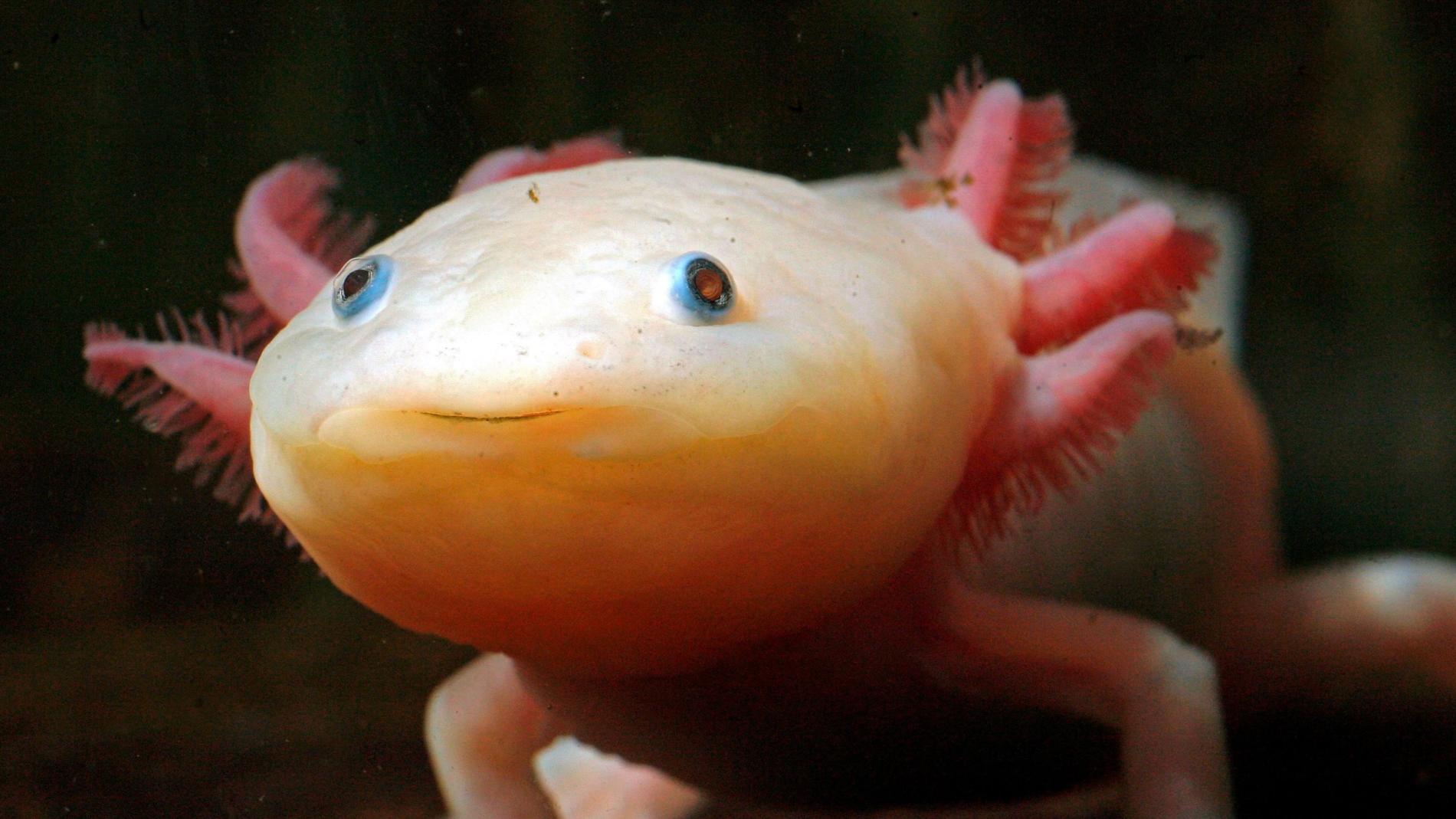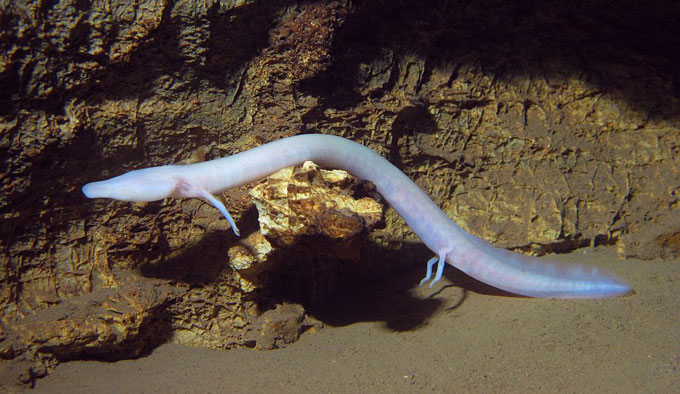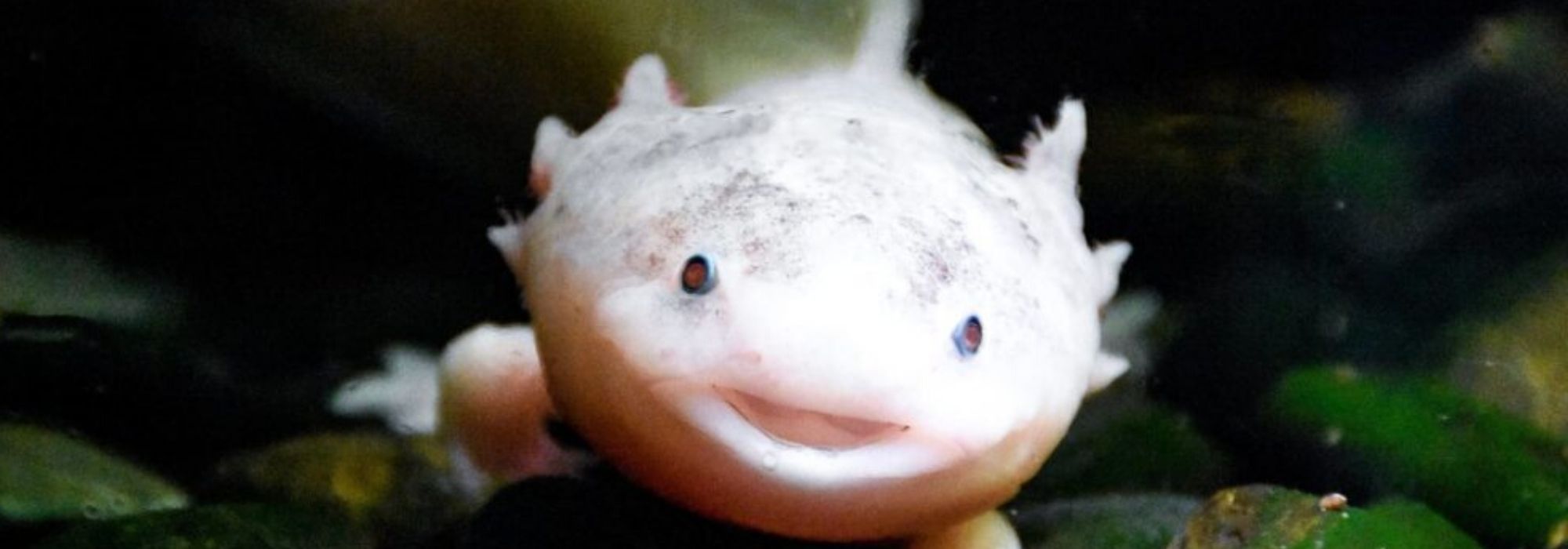Axolotls and Olms
Have you heard of human fish or have seen an adorable walking fish? Today, we are going to introduce unique creatures, Axolotls and Olms. What are they? They are not fish, but they are entirely aquatic; they spent their lifetime in the water and they both love to eat mollusks and worms. In fact, they are amphibians who do not undergo metamorphosis. They never mature into the normal form of an adolescent and that is why they are called neoteny.

Axolotls can be found in South America and scientifically named as Ambystoma mexicanum but commonly known as “Mexican walking fish” because they have limbs and can only be found in Lake Xochimilco in Mexico City. They measure 23 centimeters on average. Their appearances are extraordinary due to their feathery gills and often appear to be smiling because of the shape of their mouth. Their limbs are immature and have digits that are long and slender. Usually, they are black or speckled brown, though albino and white colors are very common, especially among juvenile specimens.
Axolotls are incredibly unique because they can regrow their limbs, tails, bones, internal organs such as tissues of the eyes and heart, and even their brain, which is uncommon for the rest of the animal kingdom. In captivity, the salamanders live on average for 5 to 6 years, but some have lived for up to 17 years. Apparently, they are now critically endangered as per IUCN (International Union for Conservation of Nature) Red List of Threatened Species 2020.

On the other hand, Olms are scientifically named as Proteus anguinus and colloquially known as “human fish” due to their fleshy skin pigment. The eyes of the olms are incomplete, making it blind, while its other senses are acutely developed, particularly those of smell and hearing.
This blind, snake-like amphibian can be mostly found in the subterranean waters of the deep underwater caves of the Dinaric Alps, Southern Europe. These species are usually seen in the Isonzo-Soca River in Italy, southern Croatia, southern half of Slovenia and some parts of Bosnia and Herzegovina. Olms prefer to live in deep underground water systems especially in karst formations.
These species are about 20-30 centimeters long. Their tail is relatively small, flattened laterally, and a thin fin covers it. The limbs are tiny and thin as opposed to other amphibians, with a limited number of digits. Although mentioned above that they have fleshy skin color, the olm’s skin begins to turn dark when exposed to light; this is due to the melanin content produced by the olm’s skin. It has a pear-shaped head and a snout that is rounded. It has small set of teeth that form a strainer that helps to retain within its mouth the massive food particles.
Interesting fact about olms is that they can go without eating for ten years and still live. Olms can enjoy their life up to 58 years or more in well-oxygenated underground waters with a typical, very stable temperature of 8–11 °C (46–52 °F), infrequently as warm as 14 °C (57 °F).
Water contamination is one of the leading reasons for decreasing the olm population. Water has long been contaminated by harmful industrial waste and agricultural waste, posing a risk to the population of organisms such as the axolotls and olms.


